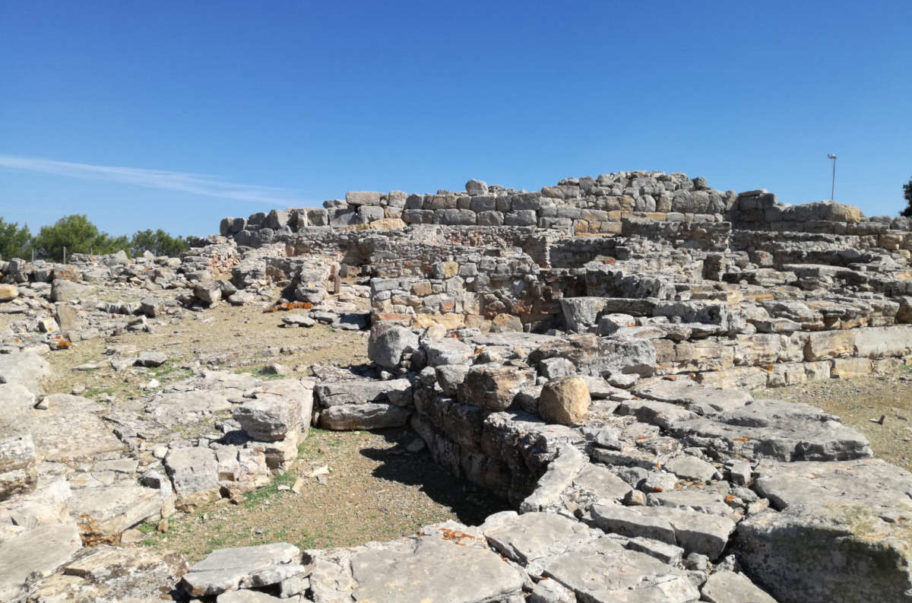Corpo Pagina
In Villanovaforru, a small town located in the heart of Marmilla, in the province of Sud Sardegna, the oldest archaeological evidence dates back to prehistory, more precisely to the Neolithic, a period to which a settlement from the 5th millennium BC is reported, approximately, located where the center of the town now stands.
But it is the Nuragic age that returns the most important monument of Villanovaforru, namely the Nuragic complex of Genna Maria, which stands on the top of a hill, strategically dominating the surrounding territories. The archaeological area is composed of a four-lobed nuraghe characterized by imposing structures, a turreted wall and a village.
The nuraghe, whose original layout dates back to the Middle Bronze Age, has a four-lobed plan, with a central keep and surrounding courtyard which encloses a well partially dug into the rock. In turn, the four-lobed bastion is delimited by a wall with six corner towers. Inside and outside it there is a large village, built in the first centuries of the Iron Age, a period in which the area was reused for cultic purposes.
The succession of the various life phases that distinguish the site is demonstrated by the many finds from Genna Maria area, many of which are preserved in the Musei Nazionali di Cagliari. The askoid jugs decorated “a stralucido” (smoothed) or with engraved geometric motifs, used to contain wine, are valuable in terms of workmanship. Worthy of note is the large ovoid jar with small handles on the shoulder and the ember vases; the compartment plate are also very peculiar, pieces of notable importance in the panorama of Nuragic ceramics. In particular, the askoid jugs and ember vases reveal notable influences of oriental provenance, which confirm, once again, the assiduous relationships that the Nuragic populations maintained, during the early Iron Age, with Levantine people. There are also numerous lamps and bowls, important indicators of activities relating to both the domestic and sacred spheres.
The area was also inhabited in the period following the Nuragic one, from the Punic to the Roman era. Worthy of mention, in this regard, are the Punic-Roman necropolis of Melas and the excavation of Genna Maria chapel, which yielded a series of ex-votos and ritual instruments including precious gold objects, figured incense burners, multiple oil lamps and Punic, Roman, Vandal and Byzantine bronze coins.

Nuraghe Genna Maria

